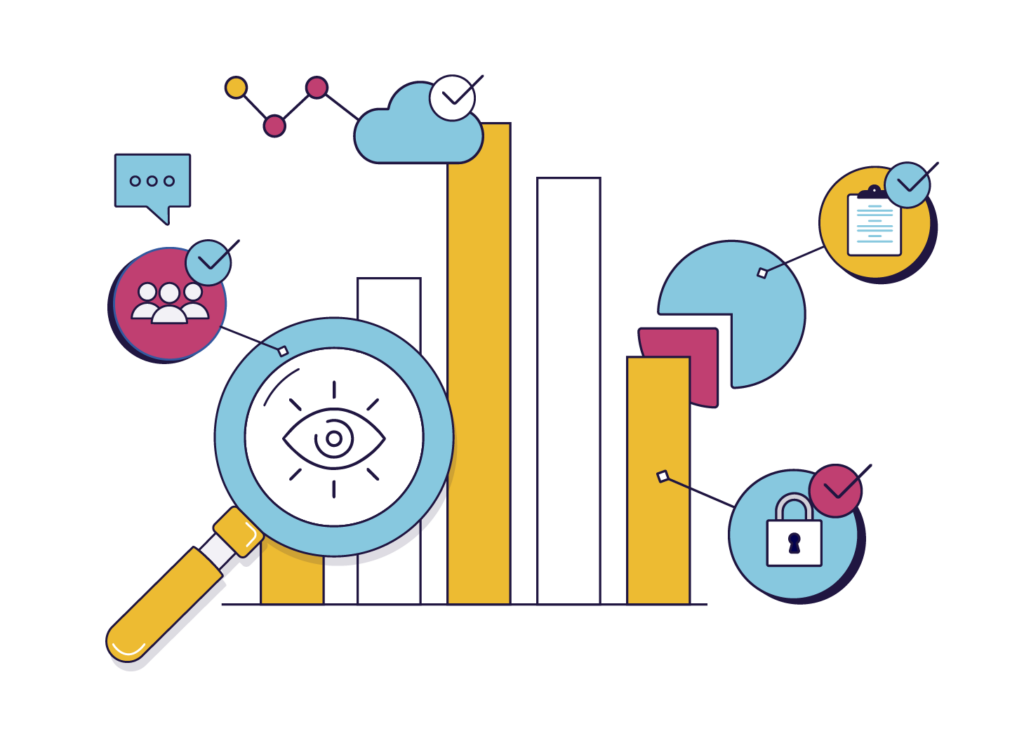Regulatory Compliance is Tough – But so is GenAI
Although regulatory compliance can be straightforward with the right tools, for many organizations, navigating a labyrinth of complex regulations can be daunting. So, why is regulatory compliance so challenging? Simply being a law-abiding organization shouldn’t feel so complicated.
Understanding the intersection of evolving technology and compliance is crucial for modern businesses.
However, as the threat landscape becomes more advanced, regulatory compliance standards must evolve, too – hopefully quicker than malicious actors.
Businesses must be prepared to face these challenges regardless of whether they consider themselves compliance professionals or not and develop strategies to overcome them to ensure that the organization complies with laws, regulations, and policies.
Some of the most evident challenges include:
- Navigating evolving regulations that are prone to change.
- Interpreting complex regulations that risk being misunderstood and incorrectly implemented.
- Creating a culture that has adequate security awareness training.
- Resource constraints regarding implementing and monitoring compliance programs effectively.
- Staying updated with new tools and software to manage compliance effectively as technology advances.
- Ensuring that personal data is handled appropriately, securely, and in compliance with regulatory requirements.
- Globalization, including varying regulatory frameworks, cultural differences, and language barriers.
Addressing these challenges effectively is essential for any organization aiming to remain compliant.
Although these challenges are part and parcel of regulatory compliance, they by no means need to incapacitate teams, drain resources, or put your team at an unfair disadvantage. Here’s why.
Understanding GenAI
What is Generative AI?
Generative Artificial Intelligence, often referred to as ‘GenAI,’ is a type of AI that creates a brand new output stemming from data they have previously been trained on. This differs from traditional AI, which was created and designed to make predictions according to analyzed patterns, data, and trends. GenAI, on the other hand, creates new content through text, images, and videos.
But this is no new feat.
Early versions of generative AI required developers to familiarize themselves with special tools, write applications using languages such as Python, and submit data via an API or similar processes. But today, the capabilities of GenAI far surpass the niche target market of its ancestors.
Through simple, plain language, users can prompt GenAI almost effortlessly. After this initial response, users can then customize and tweak the results with feedback about the style, tone, and other elements.
Now, what does all of this have to do with regulatory compliance?
Let’s unpack.
Exploring the Impact of GenAI in Regulatory Compliance
In this digital age, GenAI has a significant role to play in the realm of regulatory compliance. For compliance professionals, Generative AI has emerged as a potential game-changer; however, it has its fair share of concern. In fact, rapid generative AI (GenAI) adoption is the top-ranked issue for the next two years for legal, compliance, and privacy leaders, according to a recent survey by Gartner, Inc.
The main concern revolves around uncertainties and unforeseen risks abound, as AI regulations are still in the developmental stage. Businesses will have to contend with these challenges to ensure ethical and legal use of this powerful new technology, which we’ll get to in a bit.
First, let’s look at the ways GenAI can assist compliance professionals.
Natural Language Processing (NLP)
The NLP capabilities of AI can help compliance professionals analyze and comprehend complex regulatory requirements. This can be done by scanning large volumes of regulatory texts in a significantly reduced time frame. The GenAI systems can then interpret their meaning and identify areas that need compliance attention, saving time and resources compared to manual interpretation.
Risk Assessment and Analysis
Organizations can improve their overall risk assessment and analysis process by leveraging Generative AI. How so? Well GenAI can aid risk analysis by detecting patterns and trends in data that may indicate non-compliance. This is particularly useful considering transactional data, as GenAI may indicate potential violations of regulations, alerting compliance teams to investigate further.
Real-Time Monitoring
GenAI holds the capability to automate various compliance processes while monitoring transactions in real time to mitigate risk and ensure real-time regulatory compliance. It’s important to note that the effectiveness of GenAI tools depends on their continual evolution to meet changing compliance needs.
These are only a few use cases within compliance that GenAI can hold for organizations. However, these top examples of how GenAI can assist organizations with regulatory compliance shine a light on some of the most significant benefits and risks of GenAI in regulatory compliance. First, the perks.

Benefits of GenAI in Regulatory Compliance
GenAI helps businesses unlock a multitude of cross-functional benefits. From a risk and compliance perspective, GenAI technology drastically simplifies and optimizes the operational side of regulatory compliance.
By reducing the time spent on routine, manual tasks while producing accurate, human-grade narrative output, teams can enable businesses to allocate vital time towards additional business-critical tasks, such as engineering better customer outcomes and finding new efficiencies throughout the organization.
From a regulatory compliance perspective, some of the most significant advantages of GenAI include the following:
Enhanced Data Privacy
Information security and data privacy are paramount when it comes to regulatory compliance. Generative AI can enhance data privacy by creating synthetic data that closely mimics the original data with minimized risk of revealing sensitive information..
This synthetic data allows teams to handle and manage data with statistics and properties similar to the original data without the risk of non-compliance with data security and handling regulations. This allows businesses to mitigate the risk of human error or malicious actors by performing duties effectively while ensuring the privacy and security of sensitive information.
Improved Accuracy
When it comes to regulatory compliance, there’s no room for misinterpretation or errors. This is where data analysis comes into play. Data analysis is quintessential in identifying potential red flags, risks, and areas of non-compliance. By leveraging GenAI, compliance teams can automatically generate a large volume of data that they can then use to train machine learning models to identify patterns and anomalies indicative of non-compliance, ultimately leading to more accurate and practical risk assessments.
However, it’s crucial to continually validate and test these models to ensure ongoing accuracy.
Resource and Cost Savings
It’s no secret that organizations invest significant time, personnel, and people into regulatory compliance. So, when there’s an opportunity to reduce any of the above, it’s seen as a win! Traditionally, collecting and analyzing data to ensure their organizations are compliant has been notoriously time-consuming (and expensive) while still running the risk of exposure to non-compliance.
Generative AI alleviates these challenges by creating synthetic data that can be used for testing and validation purposes. This can significantly reduce the reliance on accurate data, ultimately lowering costs and improving overall efficiency.
However, although the benefits of GenAI seem abundant, it’s not without its risks.
Need quick answers for questions relating to safeguarding data within AI systems? Meet Scy – your go-to companion bot for all things ISO 42001 compliance.
The Risks of Implementing GenAI
Along with novel solutions, GenAI also brings new and amplified risks to manage.
Third-Party Security
One of the most paramount risks of leveraging the power of GenAI pertains to the security of internal data and third-party solutions. Most Gen-AI solutions integrate with third-party solutions. This creates an extensive network of frequent data sharing. Therefore, a single vulnerability in a GenAI solution can pose significant risks to the individuals or enterprises utilizing that particular solution, and the data to said solution has access. An example of this is the fact that ChatGPT is being integrated into numerous applications, such as Microsoft 365, and will be available as CoPilot. As a result, every tool within the Office 365 ecosystem will be impacted by this integration.
Legal & Regulatory
Regarding regulatory compliance, several risks light up the dashboard. When leveraging GenAI, organizations must first and foremost ensure that the processing of personally identifiable information (PII) adheres to the relevant regulatory requirements, such as GDPR and CCAP. If not, the organization is responsible for facing the consequences and repercussions, not GenAI.
It’s imperative for organizations to stay abreast of evolving regulations governing AI to mitigate these risks.
Lack of Employee Clarity on Acceptable Use
Your employees are your first line of defense, so continuous security awareness training is a significant part of maintaining regulatory compliance. However, when introducing GenAI, employees will lack clarity on what constitutes acceptable use of the technology due to unfamiliarity with the rules governing it. Legal leaders should work to build consensus on “must avoid” outcomes and institute controls to minimize the likelihood of those outcomes while championing acceptable use cases in policies and guidance.
Need for AI Governance
As GenAI tools rapidly become omnipresent, there is a lingering and ever-present lack of accountability for the negative outcomes that could create unacceptable legal and privacy risks. This being said, AI governance will not fit neatly into existing functional organizational structures, and the expertise needed may be scattered throughout the business or even nonexistent.
Therefore, it’s critical that legal leaders document roles and responsibilities for approvals, policy management, risk management, and training for GenAI.
GET COMPLIANT 90% FASTER WITH AUTOMATION
With Great Power Comes Great Regulatory Responsibility
Despite some (many) reservations and concerns, a survey showed that optimism remains high for generative AI. Regardless of concerns, respondents also expressed a positive outlook for the benefits of generative AI for their businesses, with 82% reporting high confidence that GenAI grants them a competitive advantage. But very few have thrown complete caution to the wind. In fact, 80% of respondents have initiated the development of guidelines and policies specific to AI use.
Are they strong enough?
What are your thoughts on GenAI? Worth the risk, or not without some AI regulations in your pocket. We explore this topic further on the Forbes Tech Council here: A New Frontier: AI Compliance Regulations Redefined For A New Era.
As we continue to explore the potential of GenAI in regulatory compliance, balancing innovation with risk management will be key to harnessing its full potential.










